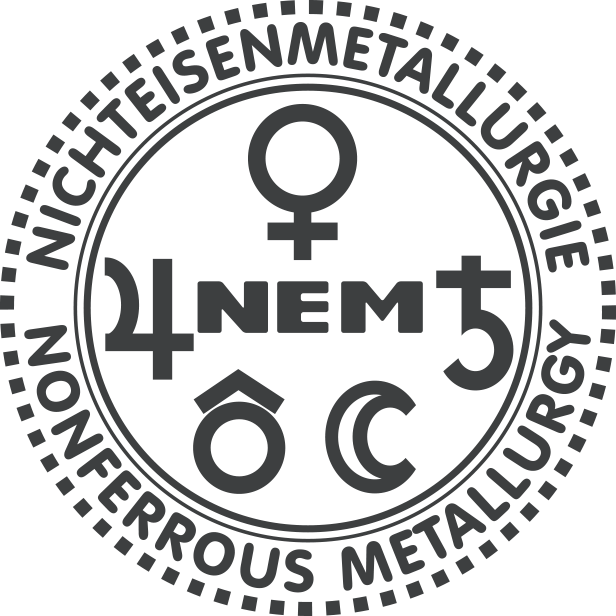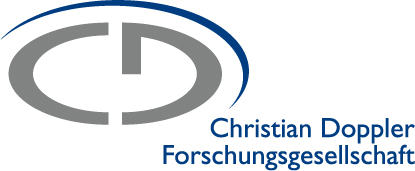Radiation resistant Al alloys for space applications
Project monitoring: Dipl.-Ing. Patrick WillenshoferUniv.-Prof. Dipl.-Ing. Dr.mont. Stefan Pogatscher In order to reduce CO2 emissions, aluminum and its alloys are increasingly in the focus of attention in lightweight automotive construction. To improve the recyclability of aluminum, so-called “crossover alloys” have been developed. By mixing AlMg (5xxx) with AlZnMg (7xxx) alloy classes, the novel alloys are […]
Al-Mg-Si alloys with content of Fe-containing primary phases
Project monitoring: Dipl.-Ing. Bernhard TrinkUniv.-Prof. Dipl.-Ing. Dr.mont. Stefan Pogatscher One of the biggest challenges in recycling aluminum is the highly diverse composition of aluminum scrap. Iron in particular poses a problem, as it gradually accumulates through the recycling of secondary aluminum and is difficult to remove by metallurgical means. In aluminum alloys it tends to […]
Influence of cluster hardening on strength and strain hardening behavior of various aluminum alloys
Project monitoring: Dipl.-Ing. Philip AsterUniv.-Prof. Dipl.-Ing. Dr.mont. Stefan Pogatscher The low density, wide strength spectrum and extensive application of forming and working processes are just some of the reasons why aluminum alloys are used in so many areas. In addition, minimizing energy consumption is a driving force for the use of lightweight materials such as […]
Optimization and industrial establishment of aluminum crossover alloys
Project monitoring: Dipl.-Ing. Sebastian SambergerUniv.-Prof. Dipl.-Ing. Dr.mont. Stefan Pogatscher The use of conventional wrought aluminium alloys, especially in the automotive industry, always requires a compromise between required strength and sufficient formability. By using aluminium crossover alloys, it is possible to avoid this trade-off, as these alloys offer both high strength and excellent plastic deformability and […]
In situ Transmission Electron Microscopy (TEM)
Project monitoring: Diego Santa Rosa Coradini, MScUniv.-Prof. Dipl.-Ing. Dr.mont. Stefan Pogatscher In situ TEM heating is a tool that aims at the analyses of very localized transformations while undertaking the environment under different thermodynamical conditions by modifying its temperature. The in situ heating is done by a microelectron mechanical system (MEMS), in our case small […]
Influence of the input material on the melt quality of aluminium alloys
Project Managers: Dipl.-Ing. Thomas Doppler Univ.-Prof. Dipl.-Ing. Dr.mont. Helmut Antrekowitsch The source and formation of specific non-metallic inclusions in aluminium alloy melts are of major interest. For the investigations, an AlMg5-melt, based on different input material, is produced in a resistance furnace. Furthermore the melt is contacted with refractory material. The determination of type and […]
Optimization of Al-Mg-Mn alloys for use in automotive applications
Project Managers: Dipl.-Ing. Paul EbenbergerUniv.-Prof. Dipl.-Ing. Dr.mont. Stefan Pogatscher The 5xxx-series aluminum alloys are very common in the automotive industry. A strong focus was established on the superplastic forming process of these alloys in the last years. The goal of the project is the improvement of materials properties particularly with regard to forming speed, forming […]
Texture- and microstructure-engineering of aluminium alloys
Project Managers: Dipl.-Ing. Jakob GrasserbauerUniv.-Prof. Dipl.-Ing. Dr.mont. Stefan Pogatscher The ever-increasing demands in the aluminium industry with regard to the mechanical characteristics and the deformation behaviour of different alloys require a profound analysis of the different influencing factors. In addition to studies of the influence on the material from the process control, attention is also […]
Design and modification of Al-Mg-Si-alloys
Project Managers: Dipl.-Ing. Florian SchmidUniv.-Prof. Dipl.-Ing. Dr.mont. Stefan Pogatscher Lightweight construction is the dominant theme in the automotive and aerospace industries, especially in the development of new models. Due to the advantageous properties of aluminum alloys, such as a low density combined with high strength, there is enormous potential to realize significant weight savings. Limiting […]
Cross-class design approach for new aluminum alloys – INTERMIXING
Project Managers: Dipl.-Ing. Lukas StemperUniv.-Prof. Dipl.-Ing. Dr.mont. Stefan Pogatscher The low density and the resulting potential for lightweight structural applications have already put aluminum and its alloys into the focus of automobile manufacturers for quite some time. Depending on the point of installation, different alloy classes are used in modern vehicles in order to take […]
Imaging and analysis of cluster formation in aluminium alloys
Project Managers: Dipl.-Ing. Phillip DumitraschkewitzUniv.-Prof. Dipl.-Ing. Dr.mont. Stefan Pogatscher Mithilfe der Atomsondentomographie wird die Bildung von Legierungsatom-Aggregaten (Cluster) in Aluminiumlegierungen direkt nach der Abschreckung untersucht. Der Fokus liegt hier im Bereich der AlCuMg (2xxx), AlMgSi (6xxx) und AlZnMgCu (7xxx) Legierungsfamilien. Die Entwicklung eines eigenen Versuchsaufbaus um die frühen Stadien der Clusterbildung zugänglich zu machen ist […]
Optimization of aluminum alloys of the 7xxx series
Project Managers: Dipl.-Ing. Dr.mont. Gernot KolbUniv.-Prof. Dipl.-Ing. Dr.mont. Stefan Pogatscher The project deals with AlZnMgCu alloys. They show a strong reaction to age-hardening and the highest strength of all conventional aluminium wrought alloys. The alloys are mainly used in the aviation and aerospace industry because of their favourable combination of high strength and low density. […]
Influence of microalloying elements on the precipitation behavior of Al-Mg-Si alloys
Project Managers: Dipl.-Ing. Dr.mont. Marion WerinosUniv.-Prof. Dipl.-Ing. Dr.mont. Stefan Pogatscher Al-Mg-Si alloys are the industrially most important age-hardenable aluminum alloys. Room temperature storage after a solution heat treatment negatively influences a subsequent artificial aging heat treatment. The project aims to stabilize the soft as-quenched state, i.e. to retard natural aging via a variation of the […]
Investigation of the anodizing and cutting behaviour of secondary Al-alloys

Project monitoring: Dipl.-Ing. Dr.mont. Susanne Koch Dipl.-Ing. Carina Schlögl Die Erzeugung von Recyclingaluminium nimmt bereits ca. 20 % der Al-Weltproduktion ein, wobei aktuell der größte Anteil an Al-Schrott in der Herstellung von Gusslegierungen seinen Einsatz findet. Die Herstellung aus Schrotten führt nicht nur zu einer Energieeinsparung (der Energiebedarf liegt nur bei ca. 10 % von […]
Reconditioning of residues from the secondary aluminium industry (NEM)

Project monitoring: Dipl.-Ing. Dr.mont. Helmut Paulitsch In der Aluminiumsekundärmetallurgie fallen prozessbedingt unterschiedlichste Rest- und Prozessstoffe an, welche zwar verarbeitet werden, jedoch nicht zu 100 % in den Rohstoffkreislauf rückgeführt werden können. Als Rückstände verbleiben beispielsweise Materialien nach der Krätze- sowie Salzschlackenaufarbeitung, welche sich ohne weiteres für keine Verwertung eignen. Ziel des Projektes ist die Entwicklung […]
Heat treatment of 6xxx-alloys

Project monitoring: Dipl.-Ing. Dr.mont. Stefan Pogatscher The conventional heat treatment strategy for wrought products of the 6xxx-series (e.g. plates) is a time, energy and cost-consuming process. After hot rolling, most products undergo several different heat treatment steps, like a solution treatment and artificial aging, to achieve the high requirements on strength and elongation. Therefore new […]
Development of unleaded free-cutting aluminum alloys

Project monitoring: Dipl.-Ing. Dr.mont. Susanne Koch Since July 2008, aluminum for machining purposes with a lead content of more than 0.4 wt.-% has been prohibited by the European Union (RoHS – Reduction of Hazardous Substances Directive; ELV – End of Life Vehicles Directive). Aluminum alloys for machining contain low melting and soft metals like lead […]
High-temperature strength enhancement of near eutectic Al-Si cast alloys

Project monitoring: Univ.-Prof. Dipl.-Ing. Dr.mont. Helmut AntrekowitschDipl.-Ing. Dr.mont. Florian Stadler Al-Si cast alloys are widely used in the automotive industry, especially for structural elements, crankcases and cylinder heads. However, these applications presume continuous efforts to improve the high-temperature performance of the various alloys. As weight reduction and the request to reduce exhaust emissions have become […]
Use of diamond cutting disks for CNC machining of aluminium alloys (NEM)

Project monitoring: Dipl.-Ing. Dr.mont. Susanne Koch In recent years, the light metal machining industry has been increasingly switching from carbide tools to diamond cutting equipment. Especially when it comes to machining aluminum alloys, there are no serious alternatives to diamond tools in view of rising quality demands. The reasons are not only the outstanding dimensional […]
Reactivity of deoxidation aluminum in molten steel (NEM)

Project monitoring: Dipl.-Ing. Dr.mont. Christoph Wagner During solidification, oxygen dissolved in molten steel causes negative material properties such as embrittlement, susceptibility to cracking, pitting corrosion and poor machinability. A possible way to reduce the oxygen content of molten steel is to add deoxidizers to the melt. To achieve a high deoxidation potential, the quality requirements […]
Optimierung eines Aluminiumdrehspaltkeils

Project monitoring: Dipl.-Ing. Dr.mont. Philip Pucher In der Forstwirtschaft werden Holzspaltkeile in verschiedenen Variationen und Formen eingesetzt, welche dazu dienen, große Holzblöcke durch ihrer Drehwirkung zu zerteilen. Für die Fertigung dieser Spaltkeile wird derzeit hauptsächlich Stahl verwendet, jedoch ergeben sich dadurch sicherheitsrelevante Probleme hinsichtlich der Splittergefahr. Im Rahmen dieses Projektes kam es einerseits zu einer […]
Optimierung der Gusslegier AlSi9Cu3(Fe)

Project monitoring: Dipl.-Ing. Dr.mont. Philip Pucher Durch hohe Metallpreise und ständig steigende Anforderungen an die Werkstoffe, werden auch die am Markt verfügbaren Schrotte für Sekundäraluminium-Gusslegierungen immer knapper. Forderungen der Industrie, die mechanischen Eigenschaften der Sekundär-Aluminiumlegierung AlSi9Cu3(Fe) zu verbessern, schränken den Anwendungsbereich dieser Legierung immer weiter ein. Die Legierung AlSi9Cu3(Fe) ist jedoch durch ihre gute Fließ- […]
Reprocessing of salt slags from the secondary metallurgy of aluminum

Project monitoring: Dipl.-Ing. Dr.mont. Bernd Prillhofer Im Rahmen dieser Arbeit erfolgt ausgehend von einer handelsüblichen Salzschlacke, deren Aufbereitung anhand des Löse-Kristallisations-Verfahren. Des Weiteren wird eine Möglichkeit der Raffination, die Kalzination des oxidischen Rückstandes, durchgeführt. Die Analyseergebnisse zeigen, dass die im oxidischen Rückstand enthaltenen unerwünschte Begleitelemente wie Cl, F und Al(met) in Abhängigkeit der Temperatur und […]
Spülgastechnik bei der Sekundärmetallurgie von Aluminium

Projektbetreuer: Univ.-Prof. Dipl.-Ing. Dr.mont. Helmut Antrekowitsch Wasserstoffentfernung bei Al-Legierungen CFD-Berechnungen der Strömung in Al-Schmelzen Verbesserung der Element- und Temperaturverteilung in Herdöfen Erhöhung der Badturbulenz durch Einsatz einer Bodenspülung In cooperation with
Optimierung der Schmelzmetallurgie und der Homogenisierungstechnologie beim Al-Recycling

Project monitoring: Dipl.-Ing. Dr.mont. Bernd Prillhofer Der Einsatz von Sekundäraluminium weist einen sehr großen wirtschaftlichen Anreiz auf. Ein entscheidender Grund sind die im Vergleich zum Primärmetall günstigeren Herstellungskosten. So lassen sich mit der Energiemenge, die gerade für 1 Tonne primär erzeugten Aluminiums ausreicht, etwa 20 Tonnen über den sekundären Weg gewinnen. Allerdings kommt es durch […]
Development and optimization of aluminum alloys for the automotive industry

Project monitoring: Dipl.-Ing. Dr.mont. Susanne Koch Safety and convenience are crucial competitive factors when developing motor vehicles. Increasing safety in cars, for example by means of greater mechanical stiffness or additional safety systems (ABS, ASR, ESP, etc.), usually results in increased weight of the vehicle and thus higher fuel consumption. Growing awareness of environmental issues […]


